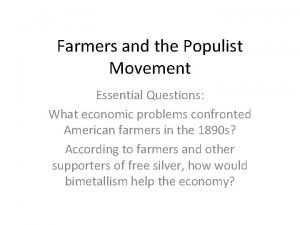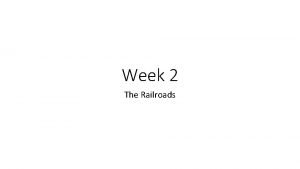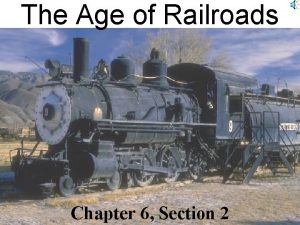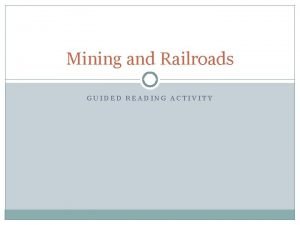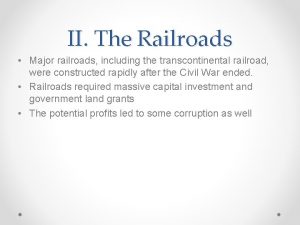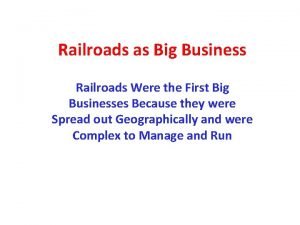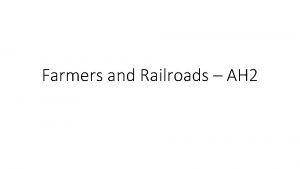RAILROADS Eden Moskona APUSH3 Hafter 2 2 14









- Slides: 9

RAILROADS Eden Moskona APUSH-3 Hafter 2 -2 -14


Captains of Industry OR Robber Barons: Cornelius Vanderbilt and Railroads Acquired his wealth in steamships and expanded into railroads in 1860 s Revamped northeast railroads through consolidation and standardization New York Central Railroad Regional railway system from New York to Chicago Replaced and built lines with standard gauges Implementation of steel Stronger to carry heavier loads Safer due to no corrosion Vanderbilt University

Railroads Drive the Economy Growth and Influence 35, 000 miles (1865) to 200, 000 miles (1900) First Transcontinental Railroad (1869) Leland Stanford’s Union Pacific and Central Pacific meet at Promontory Summit, UT Market connections, boomtowns, and jobs Federal Government Involvement Pacific Railway Acts Land grants and government bonds to railroad companies Requirement of standardized gauges By 1871, federal and state governments sold 300, 000 acres of land to railroads • Innovation and Improvement – – Standardized gauges Westinghouse air brakes Steel Time zones



The Business of Railroads Rate Wars Competition among railroad companies was fierce and intense Stronger companies lowered rates to drive out weaker companies Led to monopolies Increased rates dramatically Long haul and short haul rates Price discrimination favored commercial farmers over small farmers Stock watering/watered stock Inflated stocks led to higher consumer rates Pools Competing lines fixed prices and divided business for max profits Grange Lines Midwest farmers dependent on rail lines for shipping High freight rates impoverished farmers

Jay Gould ØIn the age of great railroad barons, no man was more infamous than Jason “Jay” Gould. ØGould earned his unsavory reputation for his shady dealings with the Erie Railroad in 1867, and a failed attempt in 1869 to corner the American gold market.

Great Railroad Strike of 1877 July 14 -September 4, 1877 Causes Panic of 1873 Class conflict with wage cuts and unemployment Events Strikers forced rail stoppages Federal troops engaged strikers Riots and massacres Impact Would lead to better organization of workers and labor unions Legislation to limit unions and preparations for potential conflicts


